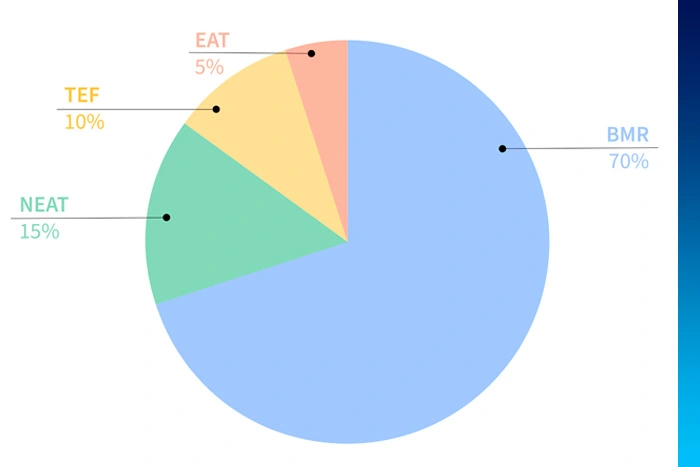Caloric Deficit or Surplus: Which is Right for You?
Two key concepts in health and fitness that often cause confusion are “Caloric Surplus” and “Caloric Deficit.” It’s crucial to understand what they mean; otherwise, you might be working hard in vain and not achieving your desired results.
What is Total Daily Energy Expenditure (TDEE)? (1)
Before diving into caloric deficit and surplus, we first need to understand how the body burns calories. This knowledge helps us better grasp the role of exercise and nutrition in weight management.
Total Daily Energy Expenditure (TDEE) is the number of calories your body burns in a day. It consists of four main components:
A) Basal Metabolic Rate (BMR): Calories burned at rest to maintain vital functions.
B) Non-Exercise Activity Thermogenesis (NEAT): Calories burned during daily activities unrelated to exercise.
C) Exercise Activity Thermogenesis (EAT): Calories burned during exercise.
D) Thermic Effect of Food (TEF): Calories used to digest and process food.

Caloric Surplus: The Key to Muscle Gain (2)
A caloric surplus means consuming more calories than your body burns daily. This approach is ideal for those struggling to gain weight and who want to build muscle mass, strength, or tone specific areas like the glutes and thighs. It’s common in muscle-building training programs.
To follow a surplus diet, it’s recommended to increase your calorie intake by 5-10%, ensuring those extra calories come from foods that support muscle growth rather than fat storage. A common mistake is thinking that a caloric surplus is a license to overeat junk food; doing so can lead to fat gain instead of muscle. Therefore, it’s crucial to maintain a balanced, protein-rich diet to maximize the benefits of a caloric surplus.

Caloric Deficit: Focused on Fat Loss (2)
On the other hand, a caloric deficit is the most popular strategy for weight loss. It involves consuming fewer calories than your body burns, forcing it to use fat stores for energy. This approach is effective for reducing body fat, though it also carries the risk of muscle loss if not managed properly.
A typical reduction of 500 calories per day can result in losing about one pound per week, though this number can vary depending on activity level and metabolism. Even in a caloric deficit, it’s essential to consume enough nutrients to maintain your energy and health. Avoid cutting too many calories, as this can slow your metabolism, hinder your workouts, and cause your body to store more fat in response to the energy shortage.

Which is Right for You?
Before making any changes to your diet, consider your current goals and think about the following:
- Are you looking to build muscle, lose weight, or both?
- How many calories do you currently consume and burn each day?
- Are you training in a way that supports your goals?
Remember that significant changes don’t happen overnight. Achieving your fitness goals can take months or even years. The key is consistency and allowing your body to adapt gradually to your new diet and training plan, increasing your chances of long-term success.
By adopting an informed and balanced approach to either a caloric deficit or surplus, along with a well-structured exercise routine, you’ll optimize your results and reach your health and fitness goals.
